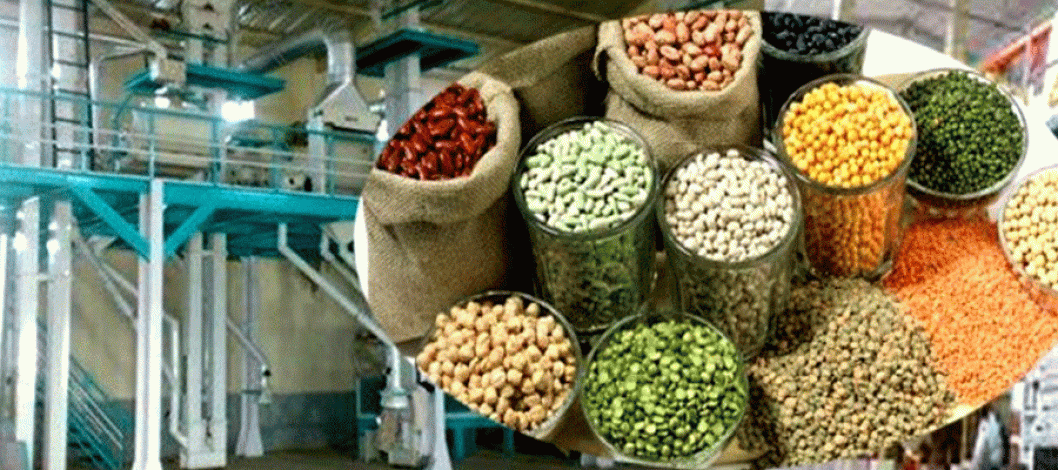
Dal (pulses) is an essential source of protein in the everyday diet of millions of Bangladeshis. With a population of over 170 million and growing awareness about nutrition and food quality, the demand for processed dal has significantly increased in recent years. The dal milling sector in Bangladesh plays a crucial role in meeting this demand, offering opportunities for rural industrialization, employment generation, and import substitution.
This article provides an overview of the dal milling sector in Bangladesh, exploring its current structure, key challenges, and future growth drivers that are reshaping the industry.
Current Status of the Dal Milling Sector
Dal milling is a post-harvest agro-processing activity where raw pulses are cleaned, de-husked, split, polished, graded, and packaged. In Bangladesh, most dal milling units are located in major agricultural hubs like Rajshahi, Bogura, Jessore, Kushtia, and Dhaka's outskirts.
There are an estimated 1,000+ dal mills in the country, with capacities ranging from 5 to 30 metric tons per day. However, many of these mills are still semi-mechanized or use traditional methods, which reduces efficiency and affects quality. Only a handful of larger mills use modern technologies such as color sorters, automated packaging, and grading systems.
Bangladesh produces pulses such as lentils, mung beans, black gram, and chickpeas domestically, but it still relies heavily on imports—particularly from India, Australia, and Canada—to meet national demand. The production gap indicates a vast opportunity for domestic processing units to grow and add value.
Key Challenges Facing the Sector
Despite its potential, the dal milling sector in Bangladesh faces several structural and operational challenges:
1. Low Technological Adoption
Most small and medium mills use outdated machines that cause high wastage, uneven splitting, and quality inconsistency. The absence of modern equipment like color sorters and automated polishing machines hampers competitiveness.
Dal (pulses)
2. Raw Material Supply Volatility
Pulse production in Bangladesh is seasonal and vulnerable to climate-related disruptions. Inadequate contract farming models and poor post-harvest storage facilities further aggravate the raw material shortage during off-seasons.
3. Dependence on Imports
More than 50% of domestic dal demand is fulfilled through imports. While imported dal is often cheaper, it creates pricing pressure on local processors and limits their market share.
4. Limited Access to Finance
Small and emerging entrepreneurs struggle to access affordable loans due to stringent collateral requirements and lack of business history, even though the sector falls under agro-based industries.
5. Lack of Branding and Market Access
Most local producers sell in bulk to wholesalers without branding or value addition. The absence of quality certification, attractive packaging, and marketing restricts access to modern retail and export markets.
Milling Technology Trade Show 13th Grain Tech Bangladesh 2025.
Growth Drivers and Opportunities
Despite these challenges, several factors are driving growth and attracting investment in the dal milling sector.
1. Rising Consumer Demand
With urbanization, a growing middle class, and increased focus on protein-rich diets, the demand for clean, hygienic, and branded dal is rising rapidly, especially in cities.
2. Value Addition and Branding
Mills that adopt polishing, grading, and attractive packaging can charge premium prices. Clean, well-branded dal is preferred in superstores, online marketplaces, and among export buyers.
3. Import Substitution Potential
Boosting local processing capacity and supporting farmers through contract farming can reduce dependence on imported dal and strengthen domestic value chains.
4. Government Incentives
The Bangladesh government has prioritized agro-processing through tax breaks, subsidized loans, and infrastructure development in rural industrial zones. Initiatives like the Agriculture and Rural Credit Policy and SME financing programs create opportunities for new investors.
5. Technological Advancements
Availability of modern dal mills machinery—such as color sorters, high-capacity de-huskers, and auto packaging systems—makes it easier to set up efficient and high-quality production units.
6. Export Potential
Bangladeshi companies have opportunities to export processed dal to nearby countries like Nepal, Bhutan, and the Maldives, as well as to Bangladeshi diaspora markets in the Middle East and Europe.
Milling Conference
Typical daily production capacity:
Small: 5–10 MT
Medium: 10–25 MT
Large: 25–50+ MT
Profit margins range between 8–15% after covering raw materials, labor, utilities, and logistics. The payback period is typically 2–4 years, depending on efficiency and market access.
Steps to Start a Dal Mill Business in Bangladesh
*Market Feasibility Study – Identify local demand, competition, and supply sources.
*Business Registration – Trade license, VAT registration, and environmental clearance.
*Factory Setup – Secure a suitable location with access to electricity, water, and transport.
*Machinery Procurement – Source appropriate milling machines, including cleaners, polishers, and sorters.
*Workforce Hiring – Train staff in operations, hygiene, and quality control.
*Marketing & Branding – Create a brand, attractive packaging, and build retail/distributor networks.
*Quality Assurance – Maintain hygiene, comply with food safety standards, and obtain BSTI certification if possible.
The dal milling sector in Bangladesh holds significant promise for agro-entrepreneurs. With rising demand, government support, and available modern technologies, local processing units can thrive and even compete in export markets. Addressing challenges related to technology, financing, and market access will be key to unlocking the full potential of this vital agro-processing industry.
--
Comment Now